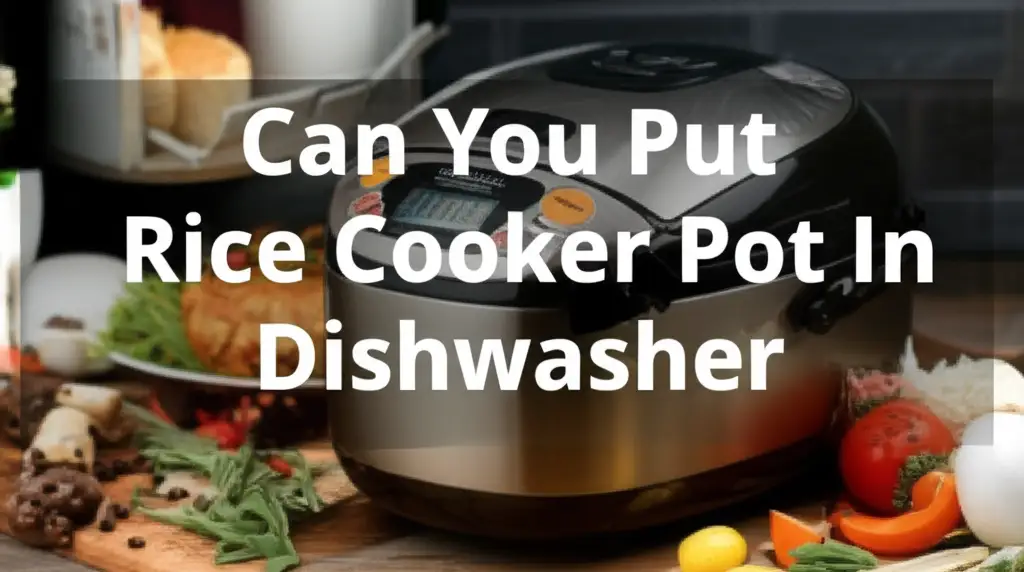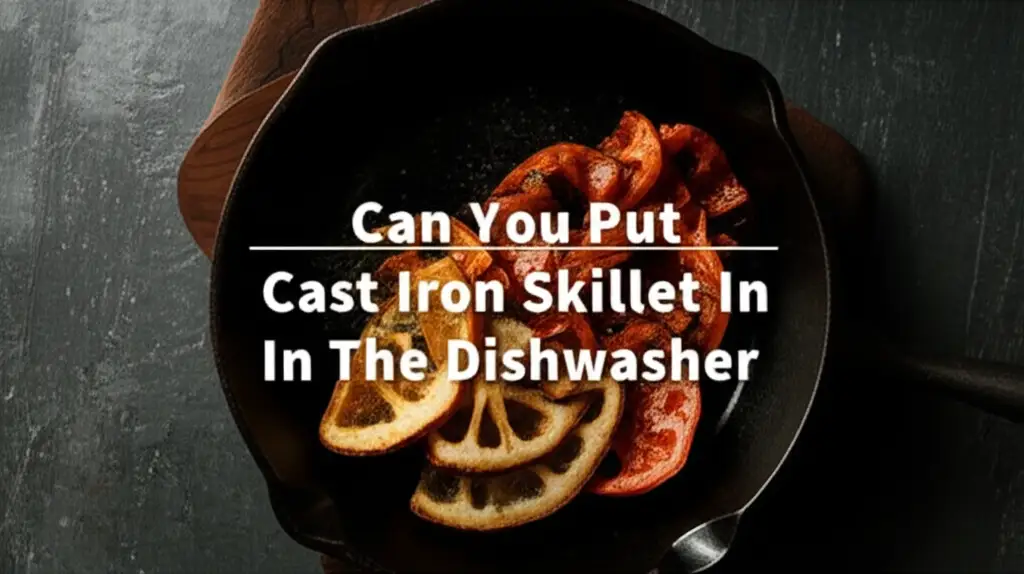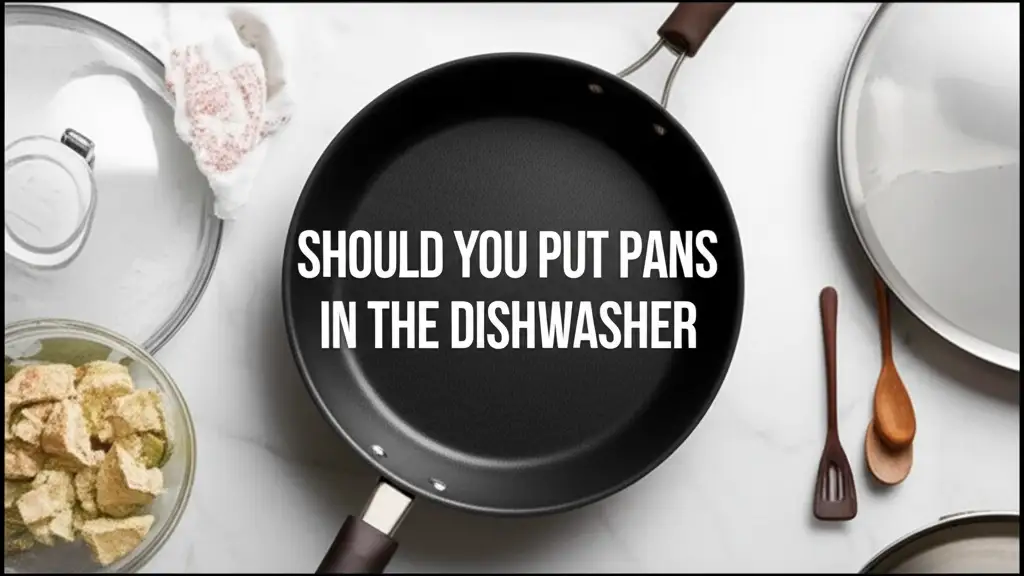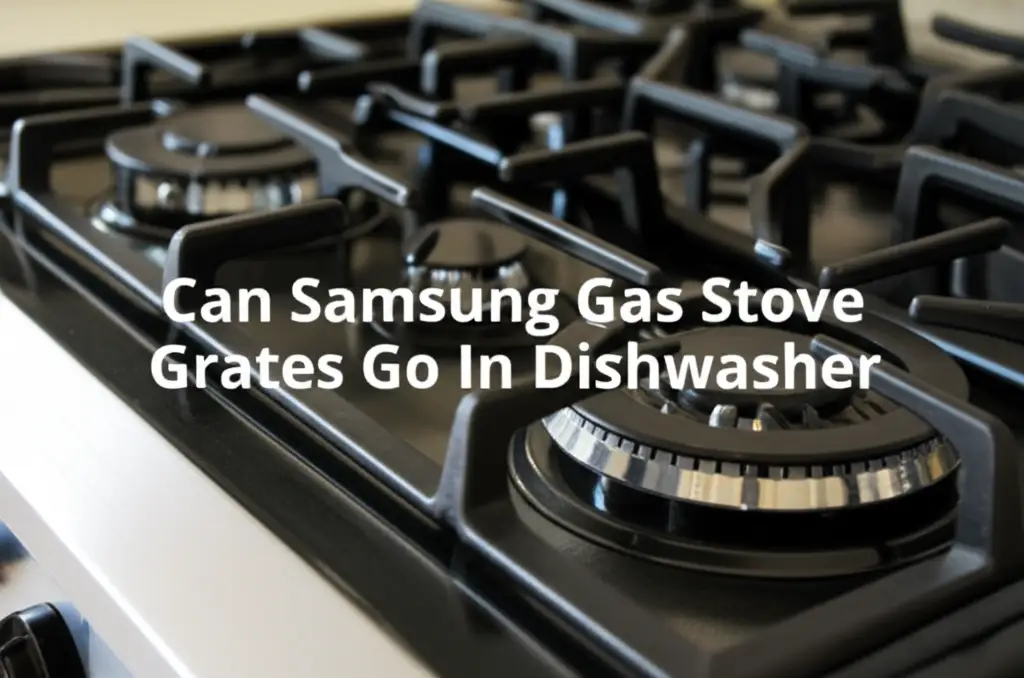· Elira Thomsen · Kitchen Care · 11 min read
Are Stainless Steel Mixing Bowls Dishwasher Safe
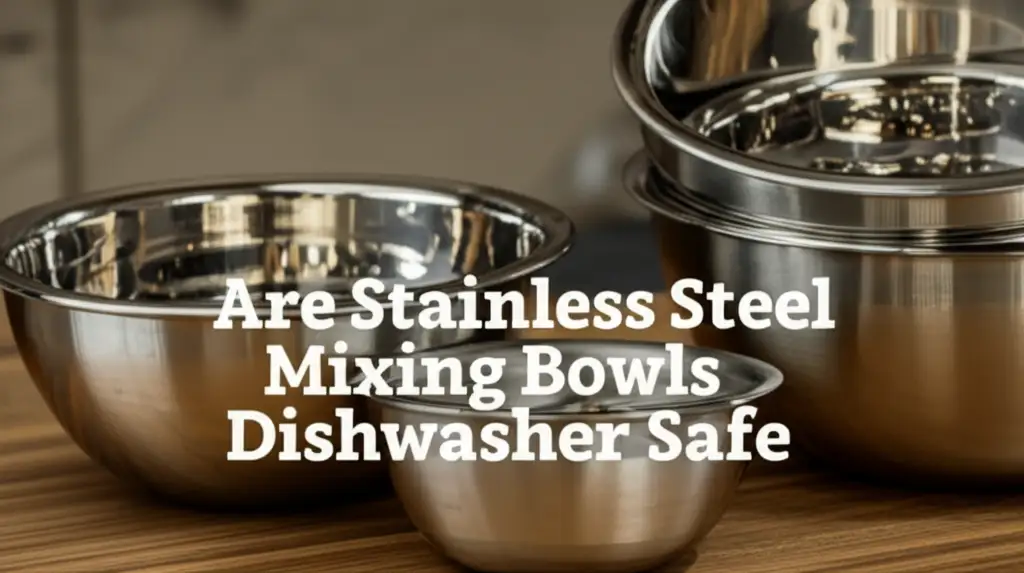
Are Stainless Steel Mixing Bowls Dishwasher Safe?
We all love the convenience of kitchen tools that make our lives easier. Stainless steel mixing bowls are kitchen workhorses. They are durable, versatile, and found in nearly every home. But a common question arises after a baking or cooking session: Can these trusty bowls go into the dishwasher?
Cleaning up after cooking can be tedious. Knowing which items are dishwasher safe saves you time and effort. I often wonder about the best way to care for my kitchen essentials. This article will answer your questions about stainless steel mixing bowls and dishwasher use. We will explore safety guidelines, potential issues, and proper care methods. Let’s make your kitchen cleanup simple and efficient.
Takeaway
- Most stainless steel mixing bowls are safe for dishwashers.
- Check for a “dishwasher safe” label or manufacturer instructions.
- Harsh detergents and high heat can sometimes cause discoloration.
- Pre-rinsing and proper loading prevent common issues.
- Hand washing is an option for delicate or very dirty bowls.
Yes, most stainless steel mixing bowls are generally safe for the dishwasher. High-quality stainless steel resists rust and corrosion well. Always check the manufacturer’s specific care instructions if available. Proper loading and suitable detergents help maintain their shine and longevity.
Understanding Stainless Steel for Dishwasher Compatibility
Stainless steel is a popular material for kitchenware. It is an alloy, primarily iron, mixed with chromium. The chromium creates a passive layer on the surface. This layer prevents rust and corrosion. Most mixing bowls use grades like 18/8 or 18/10 stainless steel. These numbers refer to chromium and nickel content. For example, 18/8 means 18% chromium and 8% nickel.
Higher nickel content often means better corrosion resistance. This makes these bowls more durable and shinier. Bowls made from lower grades might be more prone to issues. However, nearly all kitchen-grade stainless steel bowls handle typical dishwashing cycles. The material is robust against water and heat.
Factors like water quality can play a part. Hard water leaves mineral deposits. These minerals sometimes show as spots on the bowls. Detergent type also matters. Abrasive or highly chlorinated detergents can stress the stainless steel. We want our bowls to look good for a long time. Choosing the right care steps helps a lot.
Benefits of Dishwashing Stainless Steel Mixing Bowls
Putting your stainless steel mixing bowls in the dishwasher offers many advantages. The most obvious benefit is convenience. You save time and effort by letting a machine do the work. This is especially helpful after large cooking projects. My kitchen always feels cleaner faster when the dishwasher handles the load.
Dishwashers also provide a thorough cleaning. High water temperatures and strong detergents remove food residues and grease effectively. This level of sanitation is hard to achieve with hand washing alone. The intense wash cycles can kill bacteria that might linger. This keeps your kitchen tools hygienic for food preparation.
Dishwashing is efficient for multiple bowls. If you use several bowls for different ingredients, stacking them in the dishwasher is quick. You do not need to wash each bowl individually. This reduces water usage compared to continuous hand washing. Overall, dishwashing simplifies kitchen cleanup significantly. It allows you to focus on other tasks or simply relax.
Potential Risks and What to Watch For
While dishwashing stainless steel mixing bowls is generally safe, some risks exist. Being aware of these helps you prevent damage. One common issue is discoloration. You might see a rainbow sheen or white spots. The rainbow effect comes from heat and minerals. White spots are usually from hard water deposits or detergent residue.
Pitting is another potential problem. This appears as small, pinhole-like marks on the surface. It happens when chlorides, often from salts or harsh detergents, attack the protective layer. If food containing high salt or acid sits on the bowl too long before washing, pitting can worsen. Always rinse your bowls if they sit before a wash cycle.
Galvanic corrosion can occur if stainless steel touches other metals in the dishwasher. Aluminum or silver items placed next to stainless steel can cause a reaction. This reaction leads to dark spots or etching on the stainless steel. My advice is to keep dissimilar metals separated inside the dishwasher. This simple step prevents unsightly marks and preserves your bowls.
Best Practices for Dishwashing Stainless Steel Bowls
To keep your stainless steel mixing bowls looking their best, follow some simple practices. First, always scrape off excess food before loading. A quick rinse helps too, especially if food contains salt or acids. This prevents food from drying onto the surface and causing stains. It also reduces the workload on your dishwasher.
Load bowls so they do not nest tightly. Water and detergent need to reach all surfaces. Overlapping bowls can lead to incomplete cleaning. Also, ensure they are not blocking spray arms. Proper spacing allows for efficient water circulation. My tip is to place them on the bottom rack for stability.
Choose a mild dishwasher detergent. Avoid those with high chlorine bleach content. These harsh chemicals can harm the stainless steel finish over time. Consider using a rinse aid. Rinse aid helps water sheet off the surfaces. This prevents water spots and promotes faster drying. This makes your bowls come out sparkling clean. You can also manually remove stains from your stainless steel dishwasher if you notice issues.
After the cycle, if your dishwasher does not have a heated dry option, open the door. Letting the bowls air dry helps prevent water spots. If spots do appear, a soft cloth and a little vinegar can usually remove them. This proactive care ensures your bowls last for years.
Hand Washing vs. Dishwashing: When to Choose Each Method
Deciding whether to hand wash or machine wash your stainless steel bowls depends on several factors. Dishwashing offers convenience for everyday use. It is ideal for multiple bowls after baking or cooking. The high heat and strong detergents provide a very sanitary clean. For routine use, the dishwasher is often the best choice for speed and hygiene.
However, there are times when hand washing is better. If your bowls have a special finish, like a brushed or polished exterior, hand washing can preserve it. Harsh detergents and high heat in a dishwasher can sometimes dull these finishes over time. For bowls used only occasionally or for light tasks, a quick hand wash can be sufficient. This method provides a gentle touch.
Consider hand washing if bowls are heavily soiled with sticky or baked-on food. Sometimes, a dishwasher cannot fully remove very stubborn residues. A good scrub by hand ensures thorough cleaning. Also, if you have limited dishwasher space, hand washing a few bowls frees up room for other items. While dishwashers are efficient, knowing when to hand wash extends the life and appearance of your favorite bowls. This helps keep your kitchen clean and functional.
Maintaining Shine and Longevity of Your Stainless Steel Bowls
Keeping your stainless steel mixing bowls shiny and new requires some ongoing care. Water spots are a common enemy of stainless steel. These spots come from mineral deposits in your water. To prevent them, use a rinse aid in your dishwasher. After the cycle finishes, promptly remove the bowls. Then, wipe them dry with a soft microfiber cloth. This removes any lingering moisture before it can evaporate and leave marks.
Avoid using abrasive scrubbers or steel wool on your bowls. These can scratch the surface and damage the protective layer. Stick to soft sponges or cloths for cleaning. If you encounter stubborn food, soak the bowl first. This softens the residue, making it easier to wipe away gently. Regular maintenance prevents grime buildup and preserves the bowl’s finish.
For a deeper shine, you can polish your bowls periodically. Use a stainless steel cleaner or a mixture of white vinegar and water. Apply with a soft cloth and rub in the direction of the grain. Then, buff with a clean, dry cloth. This simple routine keeps your stainless steel bowls looking brand new. They will be ready for all your culinary adventures.
Troubleshooting Common Dishwasher Issues with Stainless Steel
Even with best practices, you might encounter issues when dishwashing stainless steel. Water spots are very common. They appear as cloudy or white marks. Often, a rinse aid addition to your dishwasher helps. You can also wipe the bowls dry immediately after the cycle ends. For existing spots, a cloth dampened with white vinegar works wonders. Just wipe, then rinse and dry.
Rust spots can appear, though less frequently. These are often not true rust from the bowl itself. They usually come from rust transferring from other items. Old, rusted screws inside the dishwasher or rusting cutlery can cause this. Identify and remove the source of rust. Then, clean the spots on the bowl with a non-abrasive cleaner. Sometimes, you need to clean your dishwasher itself. Learning how to drain dishwasher water manually can be a first step in addressing drainage issues that might lead to rust.
Discoloration, such as a yellowish or rainbow tint, can occur from mineral buildup or excessive heat. This is generally harmless. You can often remove it using a stainless steel cleaner or a paste of baking soda and water. Apply, let sit briefly, then scrub gently. Regular cleaning and proper loading minimize these occurrences. If your dishwasher has drain line issues, these can also affect overall cleaning quality. You can look into how to clear dishwasher drain line for better performance.
Understanding Dishwasher Detergents and Water Chemistry
The type of detergent you use significantly impacts your stainless steel bowls. Dishwasher detergents contain powerful cleaning agents. Some also have bleach or strong alkalis. These can be too harsh for stainless steel over time. They might strip the passive layer or cause discoloration. Look for detergents specifically labeled as safe for stainless steel or “all-in-one” pods. These are often formulated to be less aggressive.
Water chemistry also plays a crucial role. Hard water contains high levels of minerals like calcium and magnesium. These minerals leave spots and films on your bowls after washing. A water softener installed in your home helps combat this. Alternatively, using a rinse aid in your dishwasher is effective. Rinse aid helps water bead up and run off the surfaces. This minimizes spots.
Soft water can sometimes lead to excessive sudsing. This might leave a film on dishes. Adjusting detergent quantity can fix this issue. Knowing your water type helps you choose the right detergent and additives. This ensures your stainless steel bowls emerge clean and spot-free from every wash. You can even consider if you can wash silicone mats in the dishwasher along with your bowls, ensuring all items are compatible with your detergent and water type.
FAQ Section
Are all stainless steel grades dishwasher safe?
Most common kitchen-grade stainless steel, like 18/8 and 18/10, is dishwasher safe. These grades offer good corrosion resistance. Lower grades might be more prone to staining or pitting over time. Always check for manufacturer guidelines or a “dishwasher safe” label on your specific bowls.
Why do my stainless steel bowls get white spots after dishwashing?
White spots on stainless steel bowls usually come from hard water. Minerals in hard water, like calcium and magnesium, dry onto the surface. Using a rinse aid in your dishwasher helps prevent these spots. You can remove existing spots by wiping the bowls with white vinegar.
Can I put rusted stainless steel bowls in the dishwasher?
It is not ideal to put rusted stainless steel bowls in the dishwasher. True rust indicates a compromised surface. Also, rust from one item can transfer to other items. Address the rust manually first using a non-abrasive cleaner. Then, consider if the bowl is still suitable for machine washing.
Does high heat damage stainless steel bowls?
Extremely high heat can sometimes cause a temporary rainbow-like discoloration on stainless steel. This is usually harmless and aesthetic. It happens when chromium in the steel reacts to heat. It rarely affects the bowl’s performance. Most dishwashers operate at safe temperatures for stainless steel.
How to prevent water spots on stainless steel bowls?
To prevent water spots, always use a rinse aid in your dishwasher. Remove bowls promptly after the cycle ends. Wipe them dry immediately with a clean, soft cloth. This removes any remaining water before it can evaporate and leave mineral deposits. Good drying is key.
Is it okay to wash stainless steel with other metals?
It is best to avoid washing stainless steel directly touching dissimilar metals like aluminum or silver. This can cause galvanic corrosion, leading to dark spots or etching on the stainless steel. Keep these items separated in the dishwasher to prevent unsightly reactions.
Conclusion
So, are stainless steel mixing bowls dishwasher safe? The clear answer is yes, for the most part. These essential kitchen tools handle the dishwasher’s cleaning power well. High-quality stainless steel bowls are designed for durability and ease of cleaning. My experience shows that machine washing saves a lot of time.
However, a little care goes a long way. Paying attention to your detergent choice, water quality, and loading techniques preserves your bowls. Simple steps like pre-rinsing and using a rinse aid extend their life. Understanding potential issues like water spots helps you troubleshoot effectively. Following these guidelines ensures your stainless steel mixing bowls remain shiny and functional. Keep them gleaming for all your culinary adventures. Happy cooking and even happier cleaning!
- stainless steel
- mixing bowls
- dishwasher safety
- kitchen cleaning
- kitchenware care
- dishwasher tips
- appliance care


